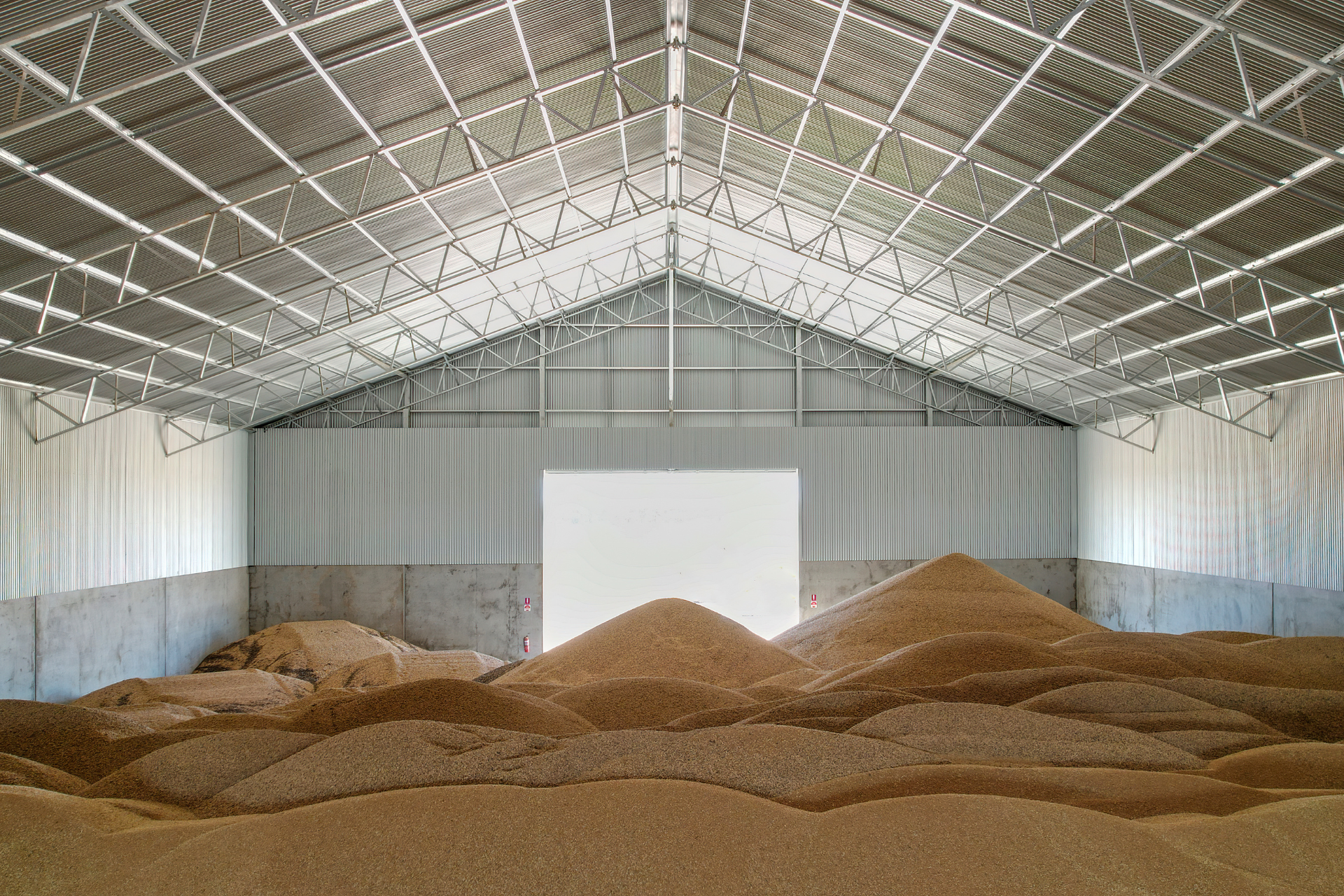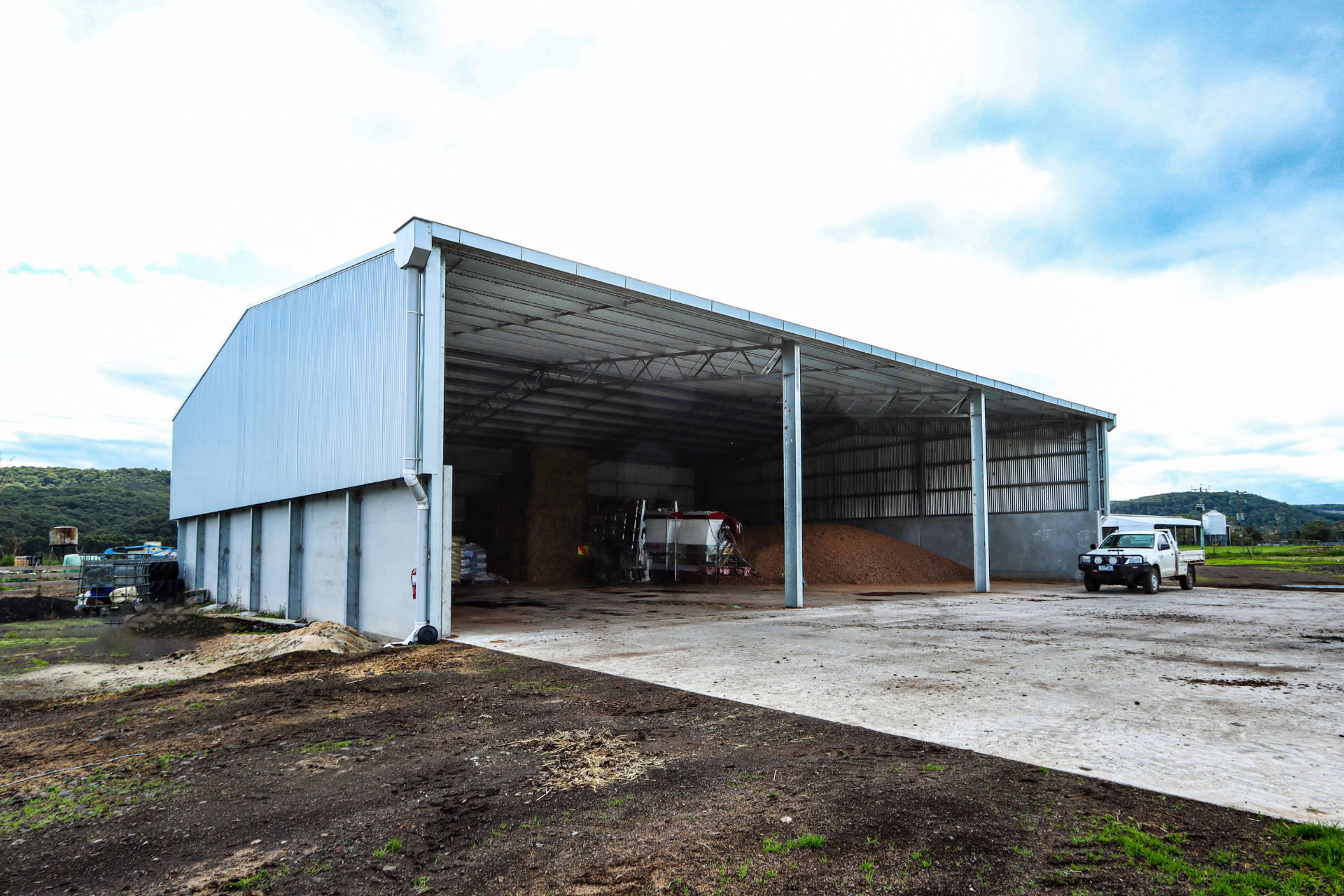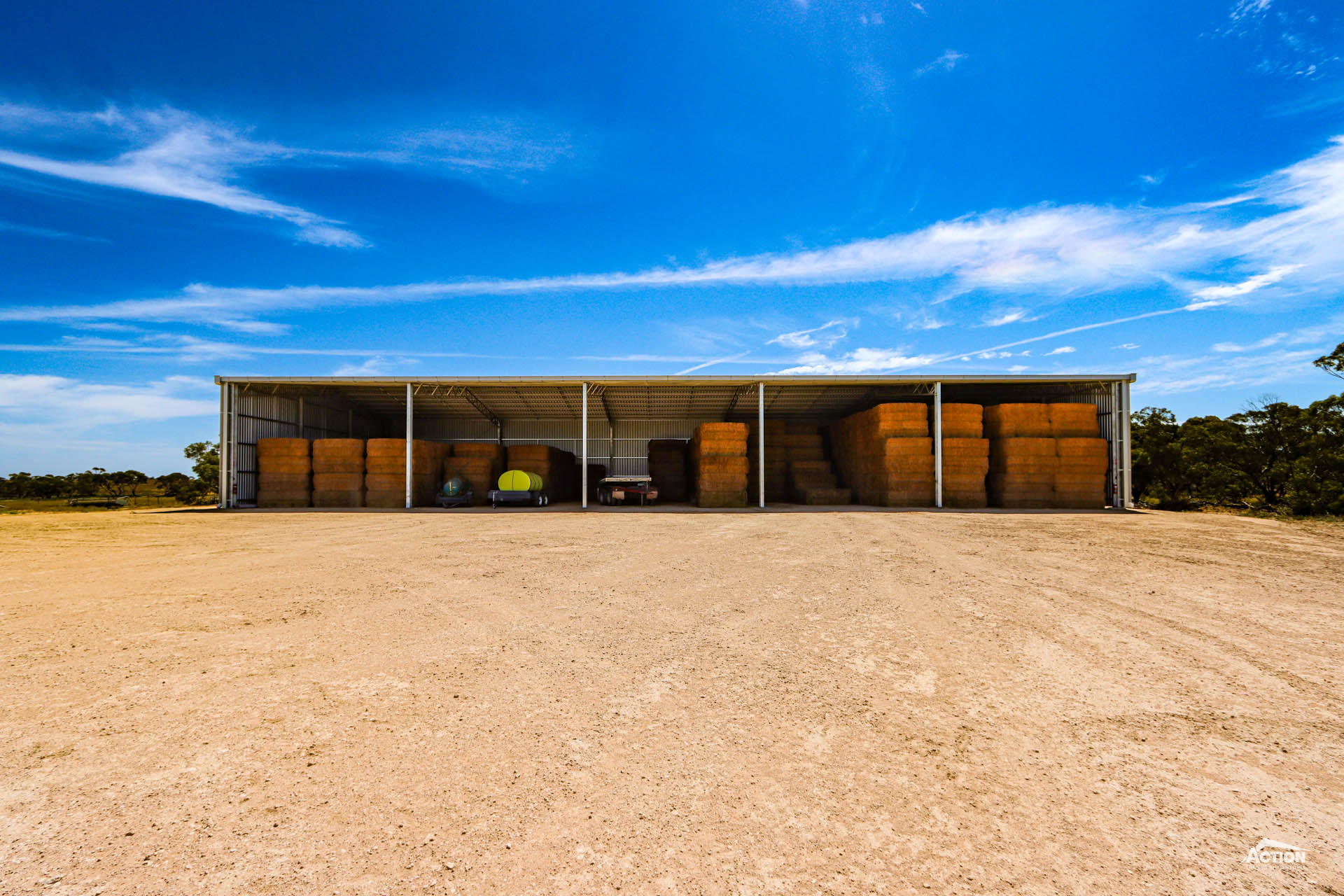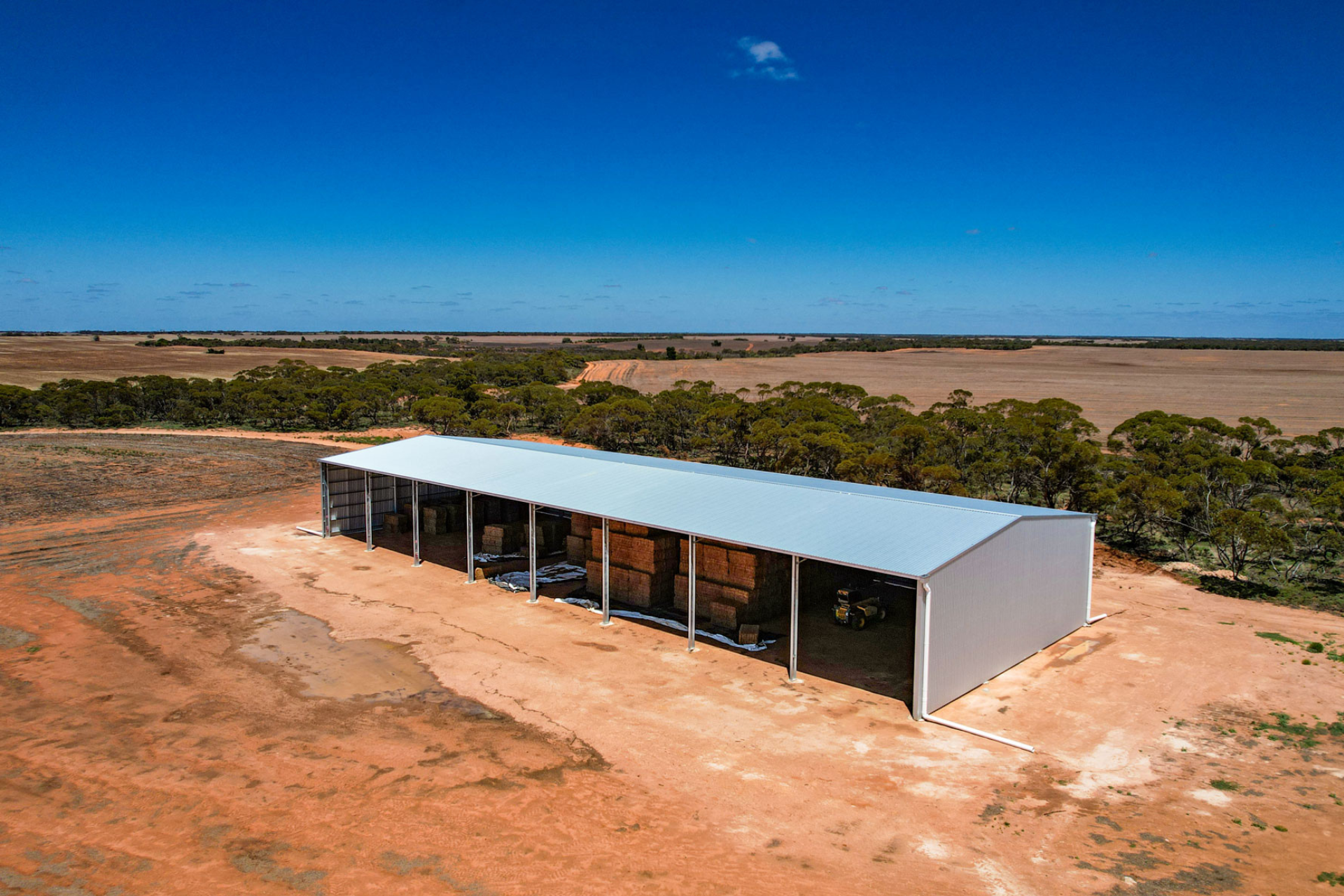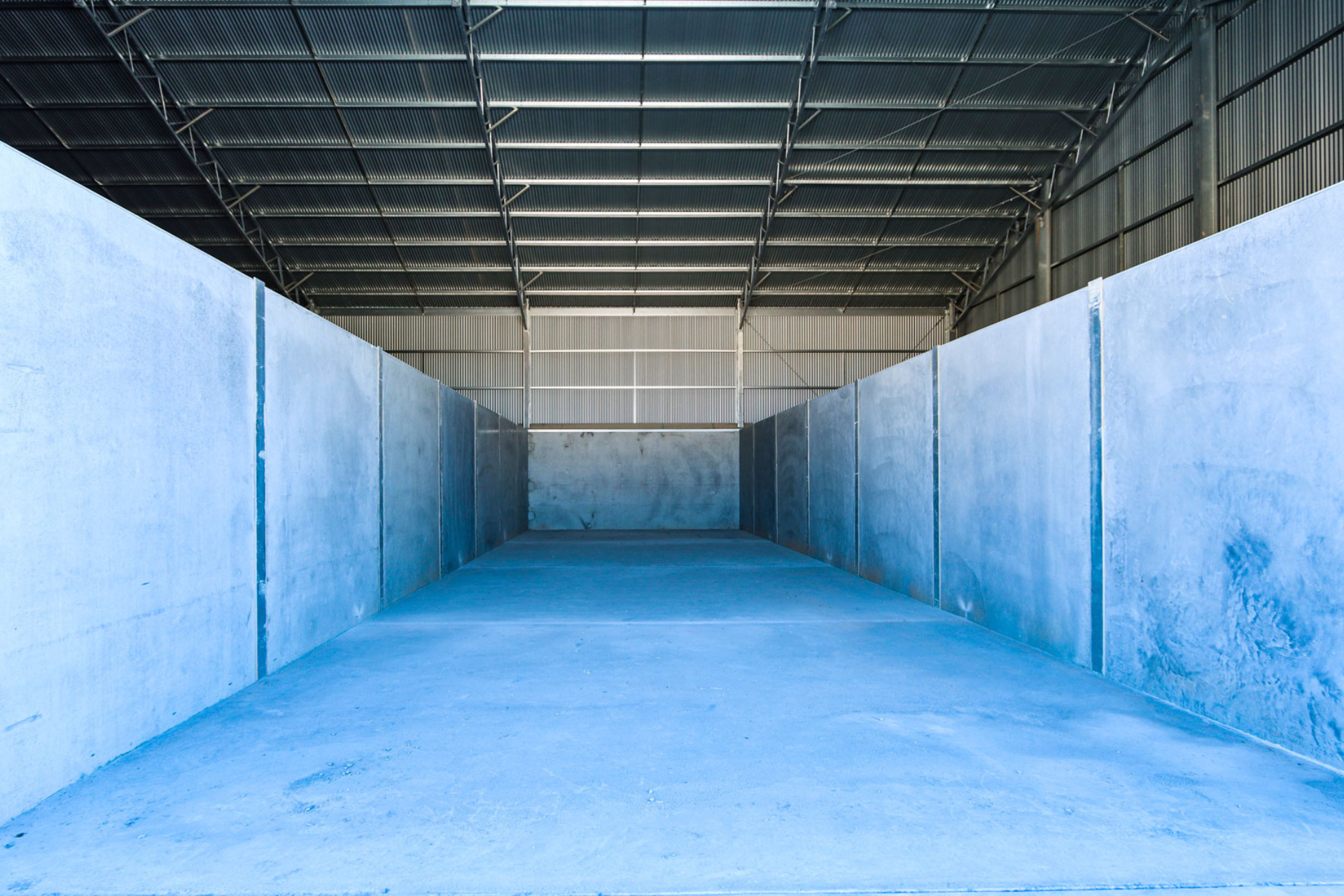Researching concrete panel grain sheds? Are they a good fit for your grain storage?
Grain sheds continue to prove to be excellent investments, providing a low storage cost per tonne and allowing growers to capitalise on market price fluctuations.
Concrete panel grain shed designs – like the project completed for Banyandah Pastoral – have become best practice with the longevity and versatility of the design proving beneficial.
While this is the recommended grain shed design, it is a good idea to research any potential disadvantages or drawbacks. This is true for any significant investment.
In this article, we discuss the pros and cons and provide price guides, project ideas and other useful information
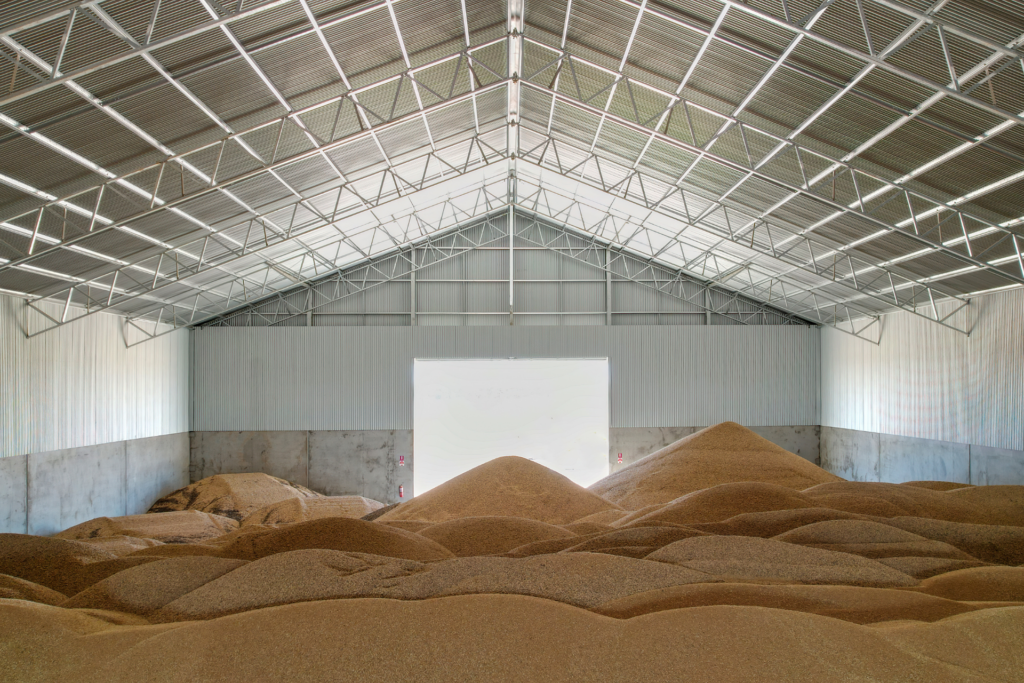
What Are Concrete Panel Grain Sheds?
Concrete panel grain shed designs use pre-cast concrete panels engineered to support the grain load inside the shed.
These concrete panel walls are fastened to the inside of the shed column and extra supporting steelwork is installed to accommodate both the concrete and grain loads.
A fully enclosed configuration with a concrete slab is the recommended configuration because it increases storage capacity and helps provide an effective barrier against pests and moisture.
Advantages
Some of the most beneficial advantages of a grain shed with concrete panels include:
- Increasing the longevity of the shed by preventing the cladding from being damaged during loading and unloading or from supporting the grain load.
- Creating a versatile investment that can also be used for fertiliser storage or machinery storage. Additional concrete panels can also be installed for segregating products.
- Providing a lower storage cost per tonne compared to silos. The longevity of this design also ensures the lowest long-term cost.
- Improving safety at harvest by avoiding accidents associated with silos and silos collapsing.
Disadvantages
There are no real disadvantages of a grain shed with concrete panels, but depending on your farming operation there may be some potential drawbacks of a concrete panel grain shed.
These include:
- Some grain types are better suited to silo storage for example if strict segregation and/or fumigation is important.
- Being a significant financial investment with a higher initial cost compared to other options such as inside-out grain sheds.
Concrete Panel Grain Shed Prices
How much does it cost to build a concrete panel grain shed?
Grain shed designs with concrete panels typically cost between $100 – $200 per tonne. This varies between configurations, sizes and design customisation. We have listed some examples below that reflect this.
- A 30m x 18m grain shed stores 1,500 tonnes and costs approx. $150 – $190 / tonne.
- A 36m x 24m grain shed stores 3,000 tonnes and costs approx. $130 – $160 / tonne.
- A 56m x 27m grain shed stores 6,000 tonnes and costs approx. $100 – $135 / tonne.
- An 80m x 30m grain shed stores 10,000 tonnes and costs approx. $85 – $115 / tonne.
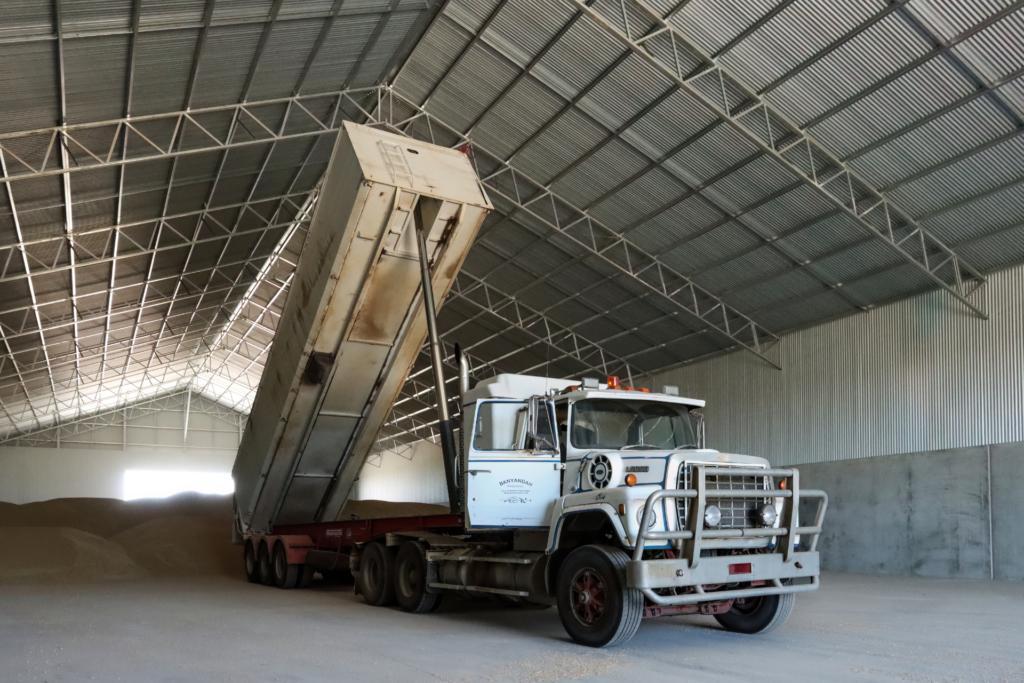
Concrete Panel Grain Shed Sizes
The concrete panel grain shed sizes listed above are all popular options, but what size grain shed do you need?
Here are some considerations to keep in mind:
- Choose the correct roof pitch. Our standard 7.5-degree roof pitch is not steep enough for grain storage sheds. Instead, to accommodate the internal angle of repose of the grain stack we usually recommend a roof pitch of 18 – 25 degrees.
- Factor in the clearance required for truck tipping into the height of your shed.
- Standard spans like 27 metres work well for grain sheds and are also cost-effective options.
- The amount of grain being stored, and the type of grain being stored. This is because different grains have different physical properties. For example, the bulk density of barley is 600-650 kg/m3, while the bulk density of faba beans is 750-800 kg/m3.
- Concrete panel wall heights of 3 metres or 3.5 metres are most common as they allow for the angle of repose of most common grain types.
Project Inspiration
Useful Resources
- Can I Retrofit Concrete Panels To My Shed?
- How Much Do Concrete Panels For Sheds Cost?
- Grain Shed Guide (PDF Download)
- Common Grain Storage Pests & What To Do About Them
- Grain Storage Calculator
We hope this overview has been helpful! For more information and articles browse our Learning Hub or to discuss your project call us on 1800 687 888.

